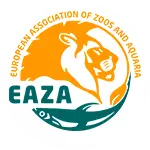Conservation of endangered species
First a bit about our unique history
Ähtäri Zoo opened in June 1973 which makes it the first one of its kind in Finland: a zoo in a natural environment. It all started with the Mayor at the time, Väinö Jaakola, and his strong pioneer vision. He had a dream of creating more turism to his small town in the middle of Finland, and at the same time he wanted to try a new way of keeping animals in a zoo -with much more space surrounded by beautiful Finnish nature.
The first animal in the zoo was a moose named Köpi, we’ve come a long way and now there are over 50 different species. The most known animals here are the brown bears, spectacled bears, lynx, snowpleopards and red pandas.
Since its establishment, one of the goals has been to create natural living conditions for the animals. Which is why the species kept here are all originally from a similar climate. The 60-hectare (150-acre) area, in which the terrain and vegetation vary widely, has provided excellent opportunities to implement EAZAs basic ideas about how to treat animals in captivity.
In addition, we try to increase knowledge of species and nature, and to share educational information with the public. For this we have a educational expert working in the zoo all year round, searching for new ways to teach children and adults as well, about the species we keep, the importance of this work and what all of us can do about it.
International species conservation work
The most important part of zoo’s everyday work around the globe and the very reason why zoos still exist, is because of the part they play in international conservation work. Zoos aim to keep endangered species and protect their gene pool. Protecting the gene pool is especially important due to climate change. Keeping a species gene pool healthy works as a sort of insurance in case of diseases and natural catastrophies. Thanks to collaboration between European zoos, several species have been saved from total extinction, for example the Europian bison. The European mink is an excellent example of a species that was already extinct from the Finnish nature, but procreated here in Ähtäri Zoo and so started its journey to recovery.
In practice the international species conservation work in zoos can be seen in transferring animals between the EAZA member zoos in order to find a perfect match as far away as possible from the animal’s family tree. But also in reintroducing species to their natural habitat in the wild.
EAZA, short for the European Association of Zoos and Aquaria, is a network of over 400 zoos, aquariums, and related organizations founded in 1992 to advance wildlife conservation through collaboration. EAZA provides a framework for its members to work together on species conservation, including managing zoo populations through programs like EAZA Ex situ Programmes (EEPs). The organization also promotes high standards in animal welfare, education, and scientific research, while advocating for nature conservation among the public and policymakers.
Ähtäri Zoo is a proud member of EAZA and keeps several species that are part of EAZA Ex situ Programmes including: spectacled bear, brown bear, otter, lynx, wolverine, red panda, snow leopard, takin, snowy owl, barn owl, lesser white-fronted goose, European bison and white-lipped deer.
Ähtäri Zoo was part of protecting one of the world’s most threatened animals, giant pandas from 2017 to 2024. The species is living, breathing proof that conservation works, since it is no longer considered to be endangered thanks to the work done in zoos all over the world and their natural habitat’s protection and conservation in China.
WildForestReindeerLIFE is a conservation project (2016-2023) that Ähtäri Zoo was collaborating with the central aim of reintroducing wild forest reindeer (Rangifer tarandus fennicus) to their native habitat in southern Suomenselkä, Finland. The project’s finnishing ceremony and seminar was held here in Ähtäri Zoo honoring the zoo’s fifty year existence in 2023.

